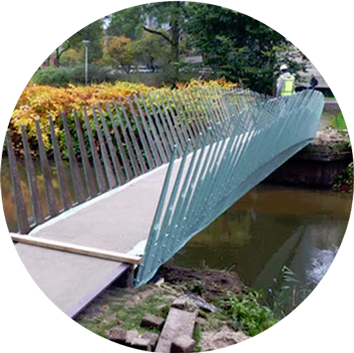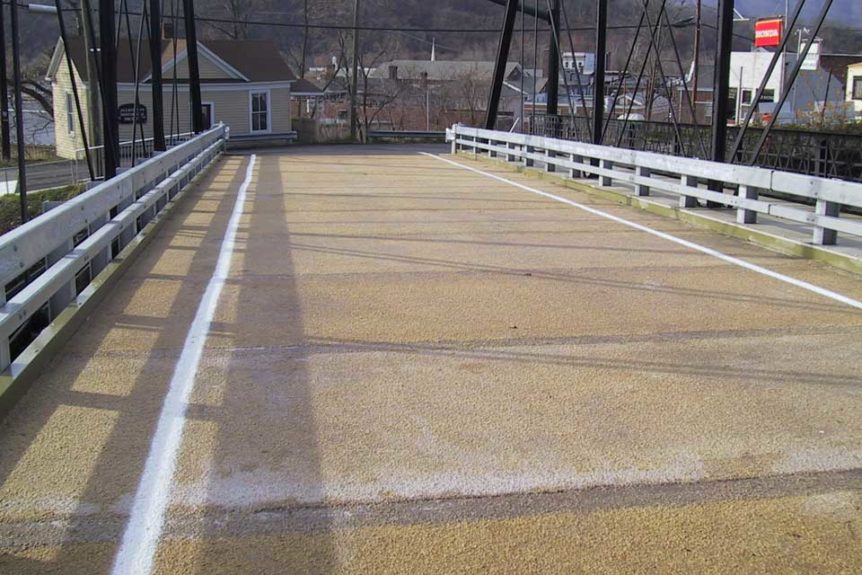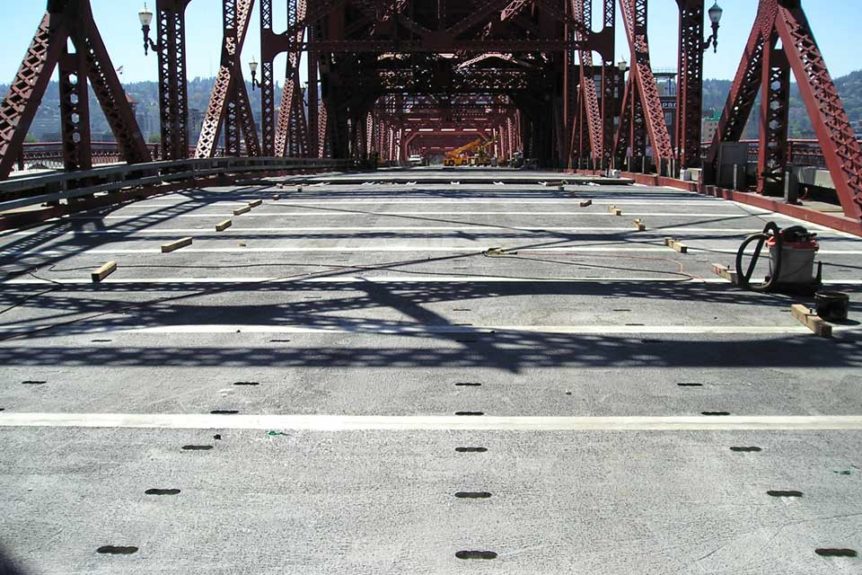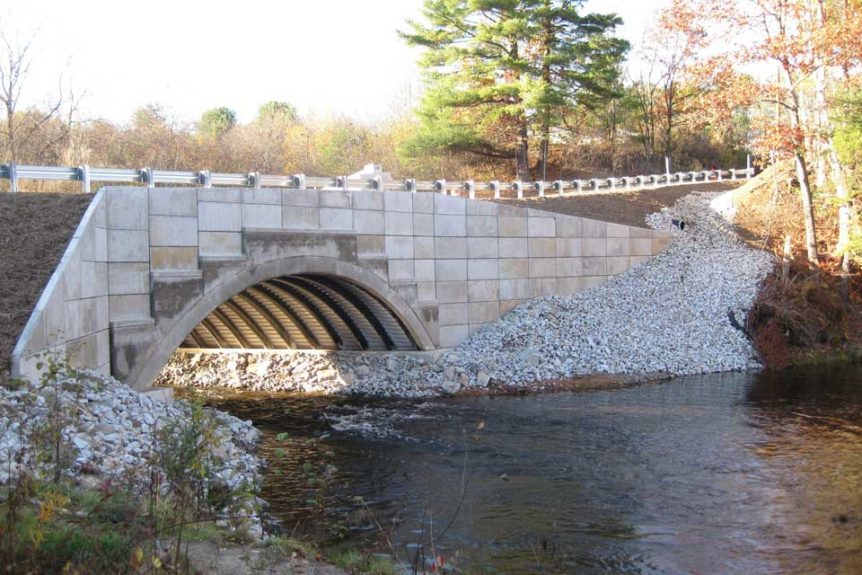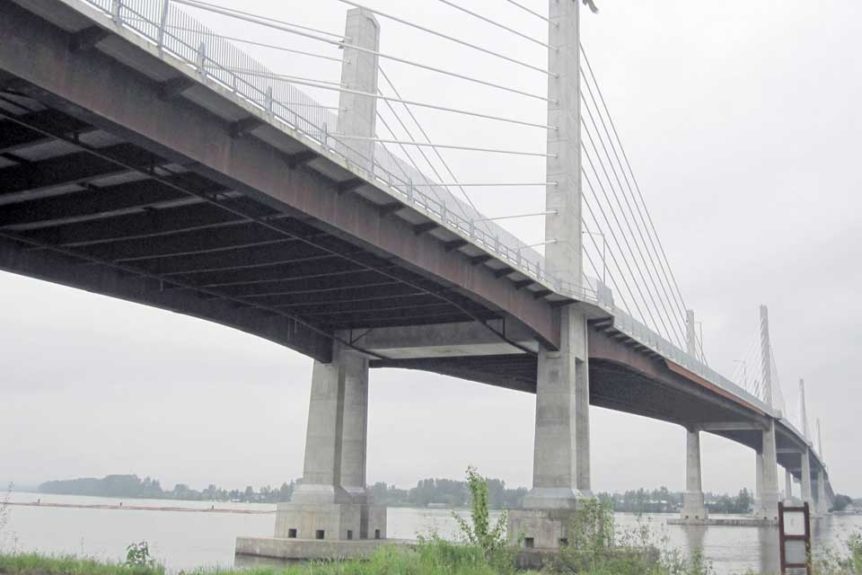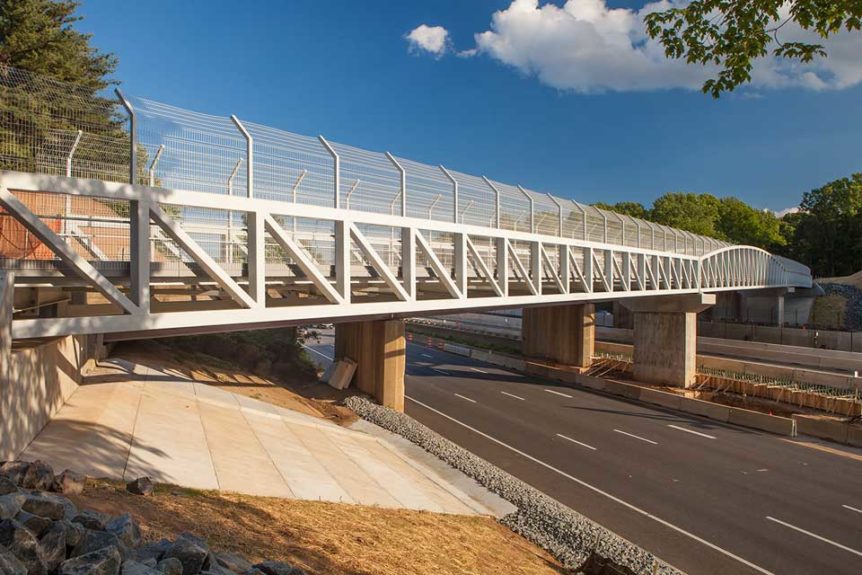Roads and Bridges
Since the construction of the first all-composite bridge superstructure in Miyun, China, in 1982, composites have been gradually gaining acceptance from civil engineers as a construction material. Today, composites are often utilized as reinforcing materials in repair and retrofitting of existing infrastructure applications. And more bridge decks are now made from composites than ever before. Composites have been used successfully in bridges all over the world. Learn where these projects are located.
Properties and Benefits
- Lightweight
- Corrosion resistance
- Ability to prefabricate
- Reduced assembly and installation time
- Lower installation and delivery costs
- Minimal disruption to the structure
- Longer lifespan
- Product and system design can be optimized for specific loads
- Reduced structure dead load can increase load ratings on existing structures
- Increased service-life of structure
- Reduced maintenance costs
Applications and Products
Bridges
- Deck panels
- Superstructure Decks
- Girders
- Barriers/parapets
- Bridge enclosures
- Drain pipes
Roads
- Dowel bars
- Continuous reinforcements
Tunneling
- Soft eyes
Case Studies
Columbia River Bridge
It was out with the old and in with the new when the City of Trail, British Columbia permanently closed a nearly century old vehicle bridge. The move tasked the Regional District of Kootenay Boundary (RDKB) with rerouting a new sewer pipe bridge across the Columbia River. Learn More
Tom’s Creek Bridge
Tom’s Creek Bridge in Blacksburg, Va., reopened to traffic June 23, 1997 as one of the first composite short-span vehicular bridges in the U.S. Learn More
Anacostia River Bridge
This FRP pedestrian bridge spans the Anacostia River into southeast Washington D.C. FRP helped minimize maintenance costs for the National Park Service. Learn More
Sandy Beach Pedestrian Bridge
Bridge traffic in "Ohio's Million Dollar Playground" came to a halt in the 1960s when the park fell into disrepair. The Indian Lake Historical Society raised the necessary funds to rehabilitate the bridge. Learn More
Hudson Run Road Bridge
In 2006, Composite Advantage installed a GFRP bridge deck in an industrial area of Summit County, Ohio, with heavy truck traffic. Learn More
Huffman Prairie Bicycle Path Bridge
The Huffman Prairie Bicycle Path Bridge connects Greene County’s bicycle/pedestrian trail system with historical sites in the Dayton area. The owner wanted a no‐maintenance deck to reduce annual operating costs. Learn More
Hillside Bridge - Cuyahoga Valley National Park
When the previous rehabilitation of this structure last less than ten years, federal highway engineers at Eastern Federal Lands decided to go with the longest lasting deck product available: FRP decking. Learn More
Piedra Lisa Bridge
After a brush fire destroyed the wood bridge and deck, a quick replacement was needed so pedestrians could cross over a multi-lane highway. Learn More
Leri Footbridge
Strongwell’s lightweight fiberglass components allowed PIPEX Structural Composites Ltd. to fabricate a footbridge in sections over the River Leri in Wales. Learn More
Kellogg Lake Pedestrian Bridge
This pedestrian bridge is part of the Portland-Milwaukie Light Rail Transit Project to expand transit access and make improvements to bicycle and pedestrian facilities. Learn More
H&BT Rail Trail
Broad Top Township chose Composite Advantage’s prefabricated FRP FiberSPAN bridge deck product to renovate the H&BT Rail Trail trestle bridge. Learn More
Rocks Village Bridge
Massachusetts DOT’s use of FRP for this project allowed contractors to meet their aggressive construction schedule by installing premade deck sections, and reduced the dead load. Learn More
North Bank Bridge
This FRP pedestrian bridge connects two parks along the north bank of the Charles River in Boston. FRP was used because the bridge had to be able to withstand loads of 100 pounds per square foot. Learn More
Sea Life Park Bridge
Two redwood bridges at the Sea Life Park in Waimanolo, Hawaii, were rotting out and had to be replaced every two to five years. The park found an ideal solution when they switched to fiberglass. Learn More
New Methods and Materials in Bridgebuilding Gain Acceptance
The Transportation Research Board study states that the usage of composites in bridges cut infrastructure costs and construction time. Learn More
